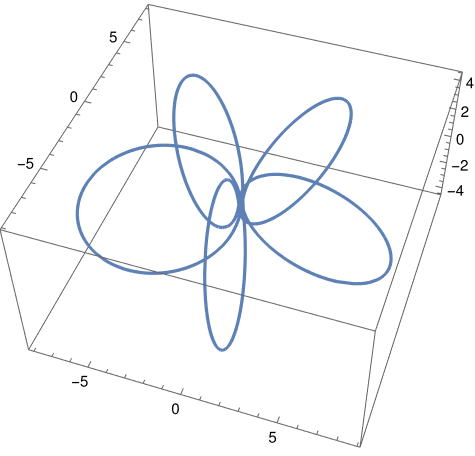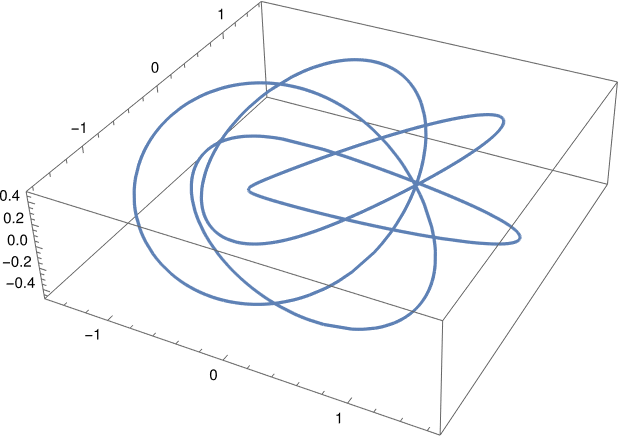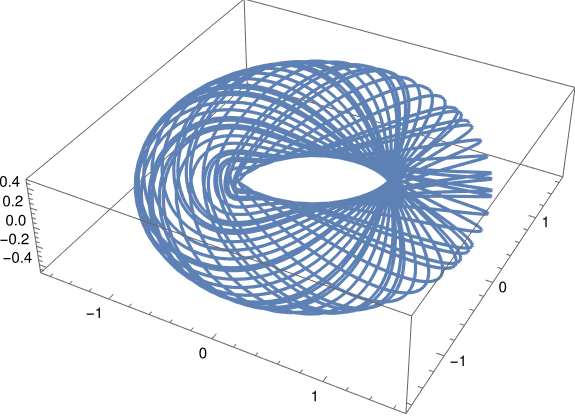Here’s a differential equation from [1] that’s interesting to play with.
Even though it’s a nonlinear system, it has a closed-form solution, namely
where (a, b, c) is the solution at t = 0 and Δ = 1 + a² + b² + c².
The solutions lie on the torus (doughnut). If m and n are coprime integers then the solutions form a closed loop. If the ratio m/n is not rational then the solutions are dense on the torus.
Here’s an example with parameters a = 1, b = 1, c = 3, m = 3, and n = 5.

And now with parameters a = 1, b = 1, c = 0.3, m = 4, and n = 5.

And finally with parameters a = 1, b = 1, c = 0.3, m = π, and n = 5.

Note that when m = 2 and n = 3 the trajectory traces out a trefoil knot.
Related posts
- Oscilliatory differential equations
- Stiff differential equations
- Life lessons from differential equations
[1] Richard Parris. A Three-Dimensional System with Knotted Trajectories. The American Mathematical Monthly, Vol. 84, No. 6 (Jun. – Jul., 1977), pp. 468–469
